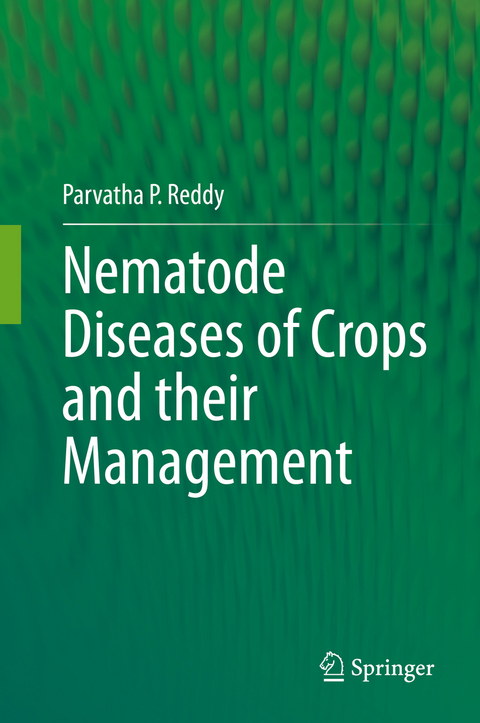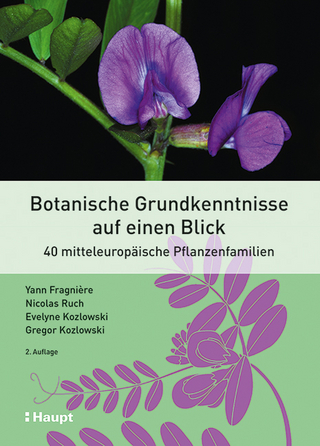
Nematode Diseases of Crops and their Management
Springer Verlag, Singapore
978-981-16-3241-9 (ISBN)
Dr. P. Parvatha Reddy obtained his M.Sc. (Agri.) degree from Karnatak University, Dharwad, and Ph. D. degree jointly from the University of Florida, Gainesville, USA and the University of Agricultural Sciences, Bangalore. Dr. Reddy served as the Director of the prestigious Indian Institute of Horticultural Research (IIHR) at Bangalore from 1999 to 2002 during which period the Institute was honoured with “ICAR Best Institution Award”. He also served as the Head, Division of Entomology and Nematology at IIHR and gave tremendous impetus and direction to research, extension and education in developing bio-intensive integrated pest management strategies in horticultural crops. These technologies are being practiced widely by the farmers across the country since they are effective, economical, eco-friendly and residue-free. Dr. Reddy has about 34 years of experience working with horticultural crops and involved in developing an F1 tomato hybrid “Arka Varadan” resistant to root-knot nematodes. He has also developed bio-intensive integrated pest management strategies in horticultural crops using eco-friendly components such as bio-control agents, botanicals and arbuscular mycorrhizal fungi. Dr. Reddy is the Honorary Fellow of the Society for Plant Protection Sciences, New Delhi, Fellow of the Indian Phytopathological Society, New Delhi and Founder President of the Association for Advancement of Pest Management in Horticultural Ecosystems (AAPMHE), Bangalore.
Chapter 1. Nematode diseases of crop plants – An overview.- Chapter 2. Cereal crops.- Chapter 3. Pulse crops.- Chapter 4. Oil seed crops.- Chapter 5. Fiber crops.- Chapter 6. Sugar crops.- Chapter 7. Tropical fruit crops.- Chapter 8. Sub-tropical fruit crops.- Chapter 9. Temperate fruit crops.- Chapter 10. Semi-arid fruit crops.- Chapter 11. Solanaceous vegetable crops.- Chapter 12. Malvaceous vegetable crops.- Chapter 13. Leguminous vegetable crops.- Chapter 14. Cucurbitaceous vegetable crops.- Chapter 15. Root vegetable crops.- Chapter 16. Bulbous vegetable crops.- Chapter 17. Cruciferous vegetable crops.- Chapter 18. Leafy vegetable crops.- Chapter 19. Mushrooms.- Chapter 20. Protected cultivation of vegetable crops.- Chapter 21. Ornamental crops.- Chapter 22. Protected cultivation of flower crops.- Chapter 23. Medicinal crops.- Chapter 24. Aromatic crops.- Chapter 25. Plantation crops.- Chapter 26. Spice crops.- Chapter 27. Tuber crops.- Chapter 28. The way ahead.
| Erscheinungsdatum | 25.10.2021 |
|---|---|
| Zusatzinfo | 171 Illustrations, color; 40 Illustrations, black and white; XXII, 518 p. 211 illus., 171 illus. in color. |
| Verlagsort | Singapore |
| Sprache | englisch |
| Maße | 155 x 235 mm |
| Themenwelt | Naturwissenschaften ► Biologie ► Botanik |
| Weitere Fachgebiete ► Land- / Forstwirtschaft / Fischerei | |
| ISBN-10 | 981-16-3241-3 / 9811632413 |
| ISBN-13 | 978-981-16-3241-9 / 9789811632419 |
| Zustand | Neuware |
| Informationen gemäß Produktsicherheitsverordnung (GPSR) | |
| Haben Sie eine Frage zum Produkt? |
aus dem Bereich


